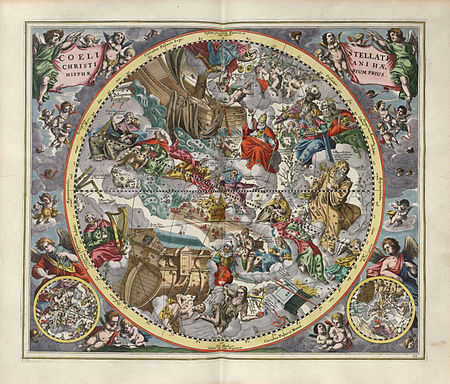
As an illustration, the Arabs rendered Opisthen (Greek Οπισθεν – “after” or “next”) or Opiso (Greek Οπισω – “to follow after”), one of the original Greek designations for the brightest star in Taurus, the Aldebaran (Arabic. الدبران (al-dabarān) “follower”), due to the fact that this star consistently trails behind the Pleiades in its daily movement across the celestial sphere. Consequently, there exist three primary designations for this brightest star in Taurus: the customary proper name, Aldebaran, and the catalog designations, Alpha Tauri (Alpha Tauri) and 87 Tauri (87 Tauri). Either of these designations may be applicable, but contemporary astronomers prefer to employ the latter two, which are scientific designations.
Most stars have names that are descriptive and are often related to their position within constellations in ancient star catalogs. These names, especially the Arabic ones, provide a description of the star’s location. For instance, the star Rigel, which means “leg” in Arabic, is located at the left leg of the hunter Orion. Similarly, the star Deneb, which translates to “tail” in Arabic, marks the tail of the swan in the constellation Swan. This tradition of naming stars in Arabic and associating them with their constellation position has been maintained throughout history. For instance, the constellation Crane was only proposed by Plancius in 1598, but one of its stars, Gamma Crane, is named Ras Alkurki in Arabic, meaning “Crane’s Head,” as it marks the head of the Crane in the constellation.
Some stars have been given names with meanings unrelated to the constellation they are found in. For instance, a star in the Hare constellation is called Nihal, which translates to “Camel quenching his thirst” in Arabic, because ancient Arabs associated the Hare constellation with the traditional Arabic asterism Camel Caravan.
Many Arabic star names have the prefix “al-“, which is equivalent to the English definite article “the”. Several stars share the same Arabic roots; for example, the root of deneb – “tail” – can be found in the names of more than ten stars in the sky. Most Arabic star names have been altered significantly to fit European linguistic norms, and their etymology can sometimes be challenging to analyze and may lead to discrepancies.
Due to their immense popularity, some of the brightest stars have managed to withstand the significant influx of Arabic names and have preserved their original Greek or Latin names. These include Arcturus, which means “Guardian of the Bear” in Greek, Capella, which means “Goat” in Latin, Spica, which means “ear of wheat” in Latin, and several others. Names of stars from other cultures, like Chinese and Hindu, have also been acknowledged in the past century. Examples include Koo She, which means “Bow and Arrow” in Chinese, and Simiram, which means “Sea in the morning light” in Polynesian. There are also modern proper names given to certain stars, many of which pay homage to renowned astronomers, astronauts, and original national names. For instance, Gamma Sails is named Regor, which is a palindrome of the name of the heroic astronaut Roger Chaffee, who tragically died in the Apollo 1 disaster. An example of a national name is the name of Alpha Peacock, which has become established in the Russian language. Peacock – “peacock”). Other modern names include, for instance, The Persian (Alpha Indian), Herschel’s garnet star (Mu Cepheus), Barnard’s Star, among others.
Both the proper and catalog names of stars are capitalized (Vega, Alpha Lyrae, 3 Lyrae) because they are unique names that refer to important and prominent celestial objects.
In recent times, there have been numerous independent astronomical and astrological organizations that claim to sell “star names” and provide certificates. However, it is important to note that star names sold by these organizations are not recognized by the International Astronomical Union (IAU). The IAU is the only organization authorized to assign official names to astronomical objects and is the sole entity acknowledged by the astronomical community. The IAU does not participate in commercial activities and does not endorse the practice of “selling star names”.
The International Astronomical Union (IAU) frequently receives inquiries from individuals interested in buying names for stars, whether for personal use or as a gift. Certain individuals engage in this type of business. Nevertheless, these “names” do not hold official recognition. Bright stars have long-standing Arabic names, and their coordinates are documented in catalogs. The same applies to clusters and galaxies. Naming guidelines exist for solar system objects, but they are not designed for commercial purposes.
Currently, stars do not have any official proper names. However, there are official identifiers for stars in different catalogs, and these identifiers are maintained by a special working group from the International Astronomical Union (IAU). Some catalogs, like SIMBAD, also include traditional historical names of stars as additional information. It’s important to note that these names are not considered official within the catalogs. Informal lists of proper star names can vary in terms of the number of objects mentioned, the variants of star names, and the method of transcription from Arabic and other source languages. There are over 500 stars that have names that are more or less widely accepted. [3]
Names of Stars in Traditional Arabic
The earliest names of stars can be traced back to the people who inhabited the Arabian Peninsula prior to the emergence of Islam. However, a significant number of star names in Arabic were derived from ancient Greek descriptions, which were translated into Arabic centuries later. Claudius Ptolemy, an astronomer from Alexandria, Egypt, meticulously documented descriptions of 1,025 stars in his book, which was published around 140 AD. This work, known as Almagest in its abbreviated Arabic form, played a crucial role in shaping the Arabic-language star nomenclature as many of the descriptions in Almagest were widely adopted as star names.
Throughout the Middle Ages and Renaissance in Europe, numerous ancient star names were replicated or inaccurately translated by different authors, some of whom had insufficient knowledge of Arabic. Consequently, the narrative of star names can become intricate. [4] Certain stars might possess multiple Arabic names, and the names themselves may be a blend of Arabic and Latin terms.
Names of Stars in Traditional Chinese Culture
Names of stars in traditional Chinese culture refer to the designations given to stars in ancient Chinese literature, history, religion, mythology, folklore, opera, and divination practices such as astrology, horoscope (火羅), and feng shui. Traditional Chinese star names often consist of the name of a Chinese constellation followed by a positional ordinal number, which can differ from one dynasty to another. However, well-known bright stars are usually named in a consecutive manner. The total number of stars within a constellation can also vary throughout Chinese history and may not necessarily increase over time.
Chinese astronomy had made significant advancements in ancient times and had knowledge of five times the number of stars described by Ptolemy. In 1875, Gustav Schlegel conducted a comprehensive study of the star names mentioned in Chinese ancient works. His work, titled “Uranographie Chinoise,” established correspondences between 760 star names and those used in Western astronomy. [5]
Notes
- ↑ Check out “Astronomers: A Biographical Directory” for more information on this topic. You can find an Appendix 1 that provides a timeline of the most significant discoveries in astronomy.
- ↑ The International Astronomical Union has an official stance on the purchasing of stars and star names. To learn more, visit their website.
- ↑ Visit the “Mythology and History of Constellations” website for a page dedicated to “Star Names”.
- ↑ Additional information can be found at [1], rmsc.org.
- ↑ In the book “The Chinese sky during the Han” by Xiaochun Sun and Jacob Kistemaker, you can find valuable insights on this topic. Refer to page 8 for more details.
- Compilation of traditional star names
- Compilation of Arabic star names
- Compilation of traditional Chinese star names
Helpful resources
Many individuals see the act of naming a star in honor of someone as a truly unique and sentimental gesture. Stars, as symbols, hold great significance for all of humanity. They serve as reminders of the potential for eternal life and the vast expanse of the universe. This informative article addresses all inquiries pertaining to the process of naming and purchasing a star.
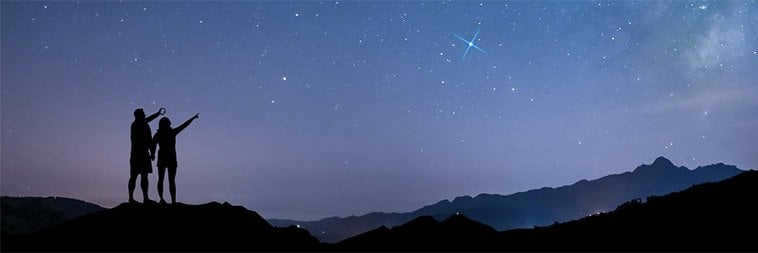

This comprehensive guide provides you with all the information you need to know about the process of naming or purchasing a star!
How can I select a star?
The Online Star Register maintains its own star database, which is organized based on their relatively close proximity to our planet. Each star is associated with a unique set of symbols, such as coordinates, letters, and numbers. For example: RA 13h03m33.35 -49°31'38.1" dec 4.83 mag Cen.
- RA is an abbreviation for Right Ascension, and “dec” is short for declination. These symbols are similar to longitude and latitude, but they are used to represent celestial coordinates.
- Mag – represents the stellar magnitude, which is a dimensionless measure of the brightness of a celestial object. The maximum magnitude or brightness of a star that can be seen with the naked eye is approximately 6.5 mag. By using binoculars, you can observe stars with a magnitude of 10. For star magnitudes higher than this, it is recommended to use an amateur telescope.
- Cen in this context refers to Centaurus, which is one of the 88 constellations visible in the sky. Knowing the constellation makes it much easier to locate the specific star you are searching for.
Name a star: constellations
Which constellation would you like to select for naming a star? You have the option of choosing from the 12 zodiac constellations or selecting a constellation that is visible in your hemisphere. Alternatively, you can leave the decision up to the system and have a constellation randomly assigned to you. If you would like to expand your knowledge about the 88 constellations that are visible in the night sky, feel free to download the interactive OSR Star Finder app.
What is the process of naming a star?
It’s simple to name a star with our order form. Just select a name and date for the star.
1. The name of the star is typically the name of the person it is being named after, such as “John Thomas”. However, you can also choose to name the star after yourself and your partner, like “Sam and Linda”. Each registration is associated with a unique star code, so the name does not have to be unique (for example, there can be multiple stars named “Sarah”). Please keep in mind that there is a character limit of around 20 characters (depending on your language). If you make a mistake or change your mind about the name you have chosen, you can modify it before sending the Gift Set. There is no time limit for changing the name of the star with our Online Star Gift service.
The registration of a star in the Online Star Register requires the inclusion of its name, date, and constellation as the primary elements.

Customize your Star Page
How can I personalize my Star gift?
In addition to selecting a name for the star and a special date, there are various ways to personalize your gift. Firstly, you can include a personal message for the recipient on the order form. This message will be included in the gift set. The second option is to customize a unique Star Page. You can modify it using the admin panel, which allows you to:
- Change the page color
- Write a welcome message
- Add a photo
- Replace the main photo
- Include a video
- Invite others to contribute their own guestbook entries
How can you purchase a star?
When you receive a gift from OSR, it is often described as “buying a star as a gift”. This description is accurate because you are indeed purchasing a gift set. However, technically speaking, you are not really buying a star, but rather naming a star through the Online Star Register. This is where the services provided by OSR become valuable.
It is not possible for anyone to buy a star and claim ownership of it. Even stars that have been given names by the scientific community are not actually owned by anyone. Nevertheless, by naming a star through OSR.org, you do receive the following:
- A gift set
- Access to the Online Star Register
- Access to a special Star Page
- Access to the exciting One Million Stars Project.
- Access to the OSR Star Finder
Get a Free Star Name
While our star naming services and products are typically fee-based, we do offer the opportunity to name a star for free through Online Star Register. If you would like to personally select the star’s coordinates and create the certificate yourself, that is certainly an option. However, if you’re looking to truly amaze and delight a special someone with a gift that includes a variety of unique items, we recommend exploring the options available from OSR.
Name a star with the assistance of NASA
NASA, which stands for the U.S. National Aeronautics and Space Administration, is responsible for overseeing matters pertaining to flight and space exploration. However, NASA does not have any involvement in the naming or selection of names for celestial objects. The International Astronomical Union (IAU) is the only organization that publishes the names of stars designated by the scientific community. Therefore, if you wish to name a star as a gift for a loved one, it is not necessary to contact NASA. Online Star Register can assist you with this endeavor.
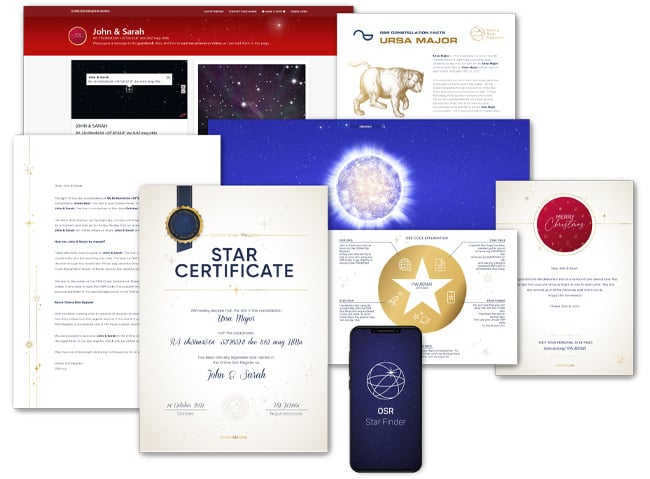
Get a unique Online Star Gift with Christmas decorations
A Star Gift for a special event
Naming a star and presenting a Star Gift is an exceptional gift for any event. It could be the arrival of a baby boy or girl, a birthday or wedding, or even an anniversary. OSR has designed a fantastic gift for each of these occasions. If you don’t have a specific event in mind, you can choose a general theme for your gift. We also offer a variety of themes:
Moreover, you have the opportunity to name a star in memory of someone who has passed away but will forever shine among the stars.
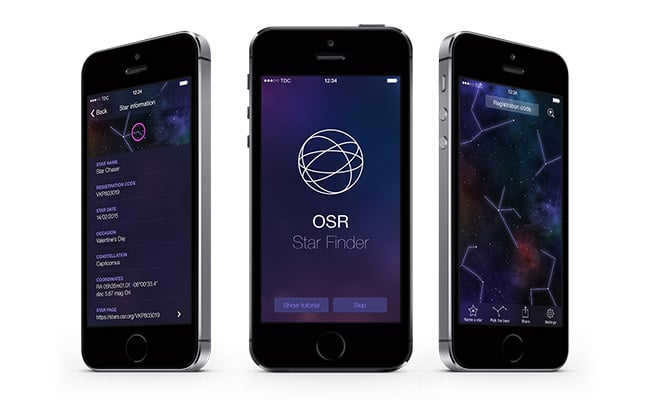
Discover your own celestial body with the help of the OSR Star Finder application
What is the process of locating a star?
If you sign up for the Online Star Register catalog, you will be given various options to locate your registered star in the night sky. Regardless of the method you choose, you will require a unique OSR code that will be provided in the instruction document. By using this code, you will be able to locate your named star through the incredible browser application called One Million Stars. Experience the thrill of flying to your star and marvel at it in 3D mode! Additionally, you can download the free OSR Star Finder mobile app to view your star in the sky at any time, day or night. Your customized Star Page displays your star using Google Sky. Moreover, you can easily locate it using the OSR Star Map, which is included in the OSR Gift Set.
If you’re interested in discovering more about locating a registered star from the Online Star Register, we invite you to peruse this informative article that offers comprehensive guidance on finding a named star.
What are people saying about their experience with star registration through OSR?
Below, you’ll find a selection of testimonials from our satisfied clients regarding the concept of naming a star:
“I was amazed, unable to speak, and filled with a flood of emotions when my husband shared the registration link for the Online Star Registration catalog with me. It’s hard to fathom that something so extraordinary is actually achievable, and to think that I received this incredible gift from my husband, who is not only my spouse but also my dearest friend. It’s truly remarkable and incredibly moving! I can confidently say that I belong to the fortunate few who are genuinely and deeply loved and cherished by their loved ones. I am immensely grateful for the opportunity to receive such invaluable gifts, and I want to express my sincere appreciation and admiration for the brilliance of your idea.”
"Dear OSR, I am absolutely amazed at the quick, efficient, and precise manner in which you handled my order. Just a short while ago, I purchased a Star Love Gift from your website for my boyfriend to celebrate our first anniversary. The impact it had on David was truly remarkable, as he was deeply moved and overjoyed by this thoughtful gesture. I wholeheartedly suggest your website to anyone searching for a gift that will stand the test of time and show their love and appreciation. Once again, thank you immensely!"
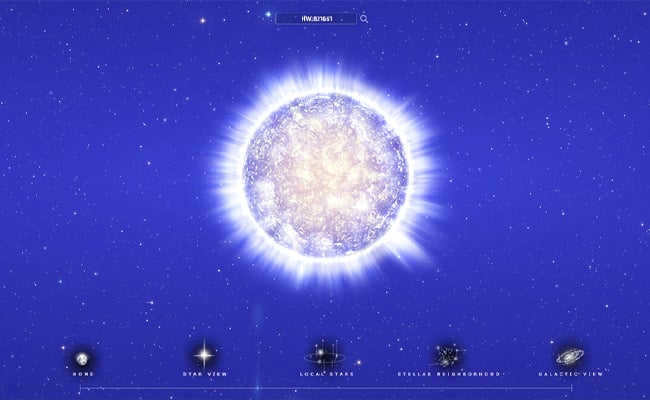
What other information should I be aware of when it comes to naming and purchasing a star?
Individuals all around the globe choose to name stars after their loved ones – whether it be in the United States, the United Kingdom, Canada, Europe, Africa, Asia, or Australia. Online Star Register offers gift options in 20 different languages, and our Star Pages, OSR Star Finder, and One Million Stars are also accessible in these languages. Giving a personalized star is a universal present that can easily be registered online.
Once you complete the registration process, your star will be included in One Million Stars, a unique browser application that displays the stars within our galaxy. This is what makes your gift so incredibly special!
Why choose to dedicate a star to someone else?
At Online Star Register, we firmly believe that every individual should have the privilege of having their very own star in the celestial sky. So, why should you consider naming a star after someone? Watch the video below for our answer.
Have you ever wondered about the origins of the names given to celestial bodies? The familiar names of stars and planets often have intriguing stories behind them, some of which have sparked debates that continue to this day. In this article, we will delve into the fascinating history of how the planets in our Solar System acquired their names, discover the location of the Plain of the Snow Maiden, and explore the importance of inclusiveness beyond our own planet.
In ancient times, people were only aware of the Sun, the Moon, and the five planets closest to Earth: Mercury, Venus, Mars, Jupiter, and Saturn. These names were derived from Roman mythology, as the Romans named these celestial objects after their gods and goddesses. It was only with the invention of the telescope that scientists were able to discover the existence of other planets, thus expanding the field of cosmic exploration.
Fortunately, this endeavor was ultimately unsuccessful, prompting astronomers to opt for the continued tradition of utilizing mythological names. Herschel ultimately decided to name the new planet Uranus, after the father of Saturn and the grandfather of Jupiter in Roman mythology.
Upon further examination of Uranus’ orbit, astronomers noticed a discrepancy between its actual position and the calculated position. This led some astronomers to theorize that there was a large celestial body near Uranus that was affecting its trajectory. This planet was eventually discovered in 1845 and named Neptune, in homage to the god of the seas. However, by the end of the 19th century, scientists began to propose the existence of yet another planet beyond Neptune. This theory was passionately championed by Percival Lowell, who was also renowned for his discovery of canals on Mars. Lowell tirelessly searched for the ninth planet in the solar system until his death, finally discovering it in 1930 and naming it Pluto, after the Roman god of the underworld.
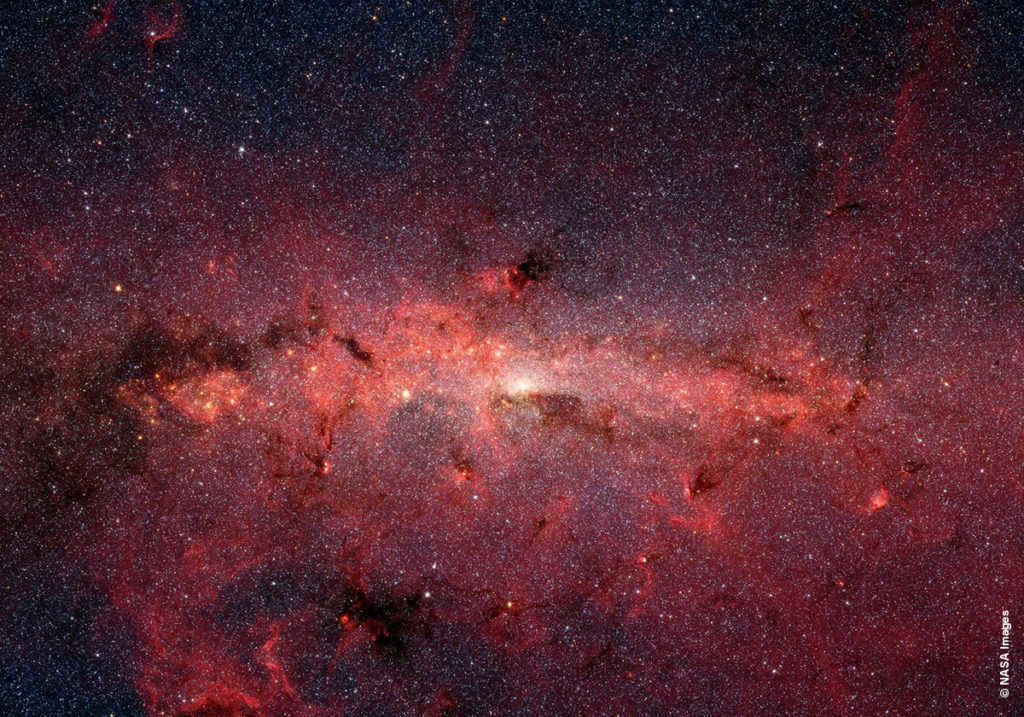
Prior to the identification of Uranus, Neptune, and Pluto, there was a dilemma regarding the names to be given to their respective satellites. Upon Galileo’s discovery of Jupiter’s four moons in 1610, he named them the Medici Stars as a tribute to their supporters, the influential Tuscan family. Around the same period, the renowned German astronomer Simon Marius also acknowledged the existence of these satellites. He believed that these celestial objects should be named in line with the already recognized planets, and thus suggested the names Mercury of Jupiter, Venus of Jupiter, Saturn of Jupiter, and Jupiter of Jupiter. This classification did not accommodate Mars, and the distinct red coloration was absent from the moons’ surfaces.
Simon’s companion, the astronomer Johannes Kepler, opted for alternative designations: Io, Europa, Ganymede, and Callisto – as a tribute to the lovers and mistresses of the king of Olympus. These names are still in use today. Similarly, the satellites discovered in the 20th century are also associated with Jupiter in a mythological sense: he is surrounded by nurses, wives, daughters, and even granddaughters.
There was a similar incident involving the satellites of Saturn, which were discovered at different times. Initially, astronomers simply assigned them numbers, but as the number of moons orbiting the most ringed planet in our solar system grew, it became increasingly challenging to differentiate between them. When the count reached seven, John Herschel, the son of the discoverer of Uranus, suggested naming them after the titans and titanides from ancient mythology: Mimas, Enceladus, Tethys, Dione, Rhea, Titan, and Iapetus. Originally, the plan was to name them after Saturn’s own children, but according to legend, Saturn devoured his offspring, so astronomers decided to go with his siblings instead.
Current Space Designations
The International Astronomical Union (IAU), an organization that has been in existence since 1919 and recently celebrated its 100th anniversary, is responsible for assigning names to celestial objects. It is worth noting that the IAU is also the entity that determined that Pluto is no longer classified as a planet.
With the increasing number of known celestial bodies, the IAU has adopted more flexible guidelines for naming. Given the limited number of Greek and Roman deities, it can often take years to select a suitable name. Despite the IAU’s recommendation to avoid personal preferences, astronomers sometimes deviate from this guidance. For example, the New Horizons team, upon receiving detailed images of Pluto and its moon Charon, created a map with informal names for the hills and mountains on these celestial bodies.
The rules governing the naming of celestial bodies are surprisingly specific and often contradictory. Take asteroids, for example – they can be given almost any name, but there are certain guidelines that must be followed. Firstly, names that are excessively long or offensive are deemed unacceptable. Additionally, they must be easily pronounceable and distinct from existing names. Any terms related to businesses or commercial ventures are strictly forbidden (apologies, Elon Musk), as are names derived from animals. It is, however, permissible to propose the name of a politician or military figure, but only if they have been deceased for at least one hundred years. Alternatively, a historical event can be used as a name, provided that it is at least a century old. Ultimately, the final decision regarding the name is made by a special committee.
The origins of certain names have fascinating stories behind them.
951 Gaspra, another asteroid, was first observed at the Simeiz Observatory in 1916. The craters on Gaspra are named after famous resorts on Earth.
Stars, on the other hand, present a different challenge. Many of them, especially the fainter ones, are only identified by their coordinates and an index. It would be impossible to give each star a unique name: the Catalog of Reference Stars, which is used for celestial navigation, currently lists 945,592,683 objects. The largest stars still receive names, but there are multiple names for the same star in different lists, leading to confusion in the astronomy community.
For those who are determined to give a name to a cosmic celestial body or claim ownership of a piece of its surface, there are two important pieces of information. Firstly, it is possible to find services that offer such opportunities. However, the International Astronomical Union (IAU) does not engage in the sale of star names or real estate on other planets and moons within our solar system. While you can spend as much money as you like on “name a star” websites, all you will receive in return is a decorative certificate that holds no recognition from any global astronomical community. The name you select will only hold validity within the organization to which you made your payment.
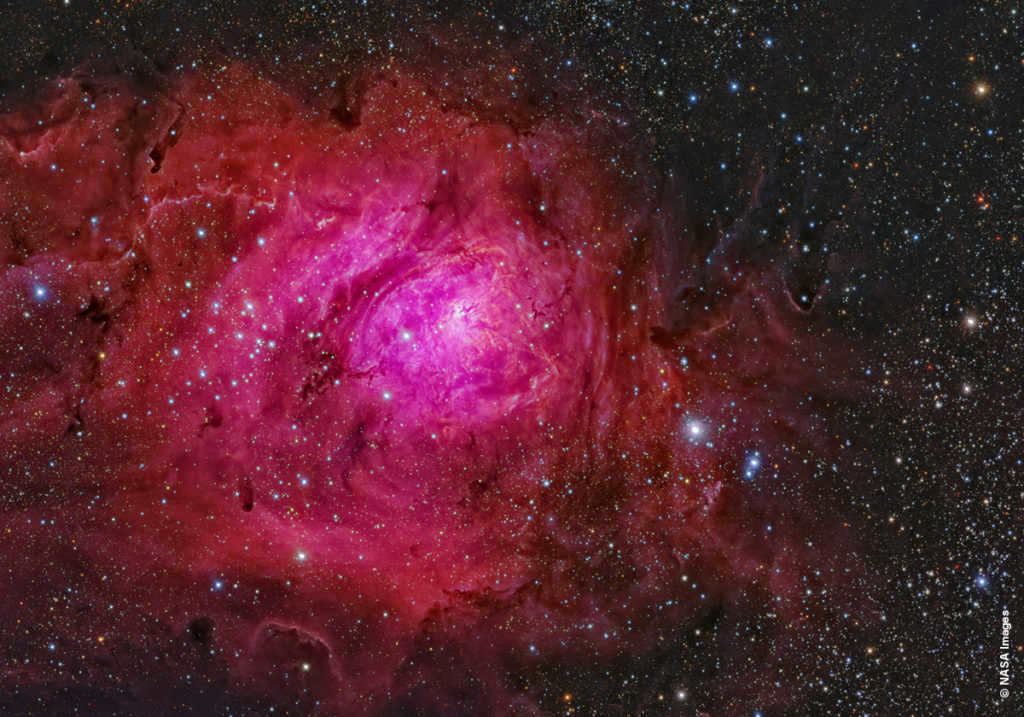
The craters on Venus, which have a diameter of over 400 kilometers, are assigned names that correspond to the planet itself in various languages. This is the reason why there are unique names like Apisuahts (given by the Canadian Indians), Citlalpul (from the Aztec language), and Kallistos (derived from ancient Greek) in these valleys.
The lowlands, on the other hand, are named after heroines from mythology and fairy tales. For instance, there are plains named Rusalka and Snow Maiden. Every geographic feature on Venus is required to be named after a notable woman, whether real or fictional.
There are only a few exceptions to this rule, such as the Maxwell Mountains, Alpha Regio, and Beta Regio. These objects were named before the late 1970s when the rule of naming after women was established. The Maxwell Mountains were named after the English physicist, while Alpha Regio and Beta Regio were named using letters from the Greek alphabet.
The names of Martian craters with a diameter of less than 60 kilometers are derived from small terrestrial towns with a population of no more than 100 thousand people. However, it remains unclear what will happen if the number of residents increases. It is possible that the crater will be demolished or the people will be forced to leave.
The history of Charon, Pluto’s previously mentioned moon, is quite fascinating. Its discoverer, an American astronomer named Jim Christy, had originally planned to name the celestial object after his wife, Charlene. In order to achieve this, he took the first part of his wife’s name and added the suffix “-on” in order to give the word a scientific touch. However, Christy soon realized that the conservative community of astronomers preferred mythological names. The leading contender at the time was Persephone, who was known as Pluto’s wife in mythology. Frustrated, Christy decided to consult an encyclopedia in hopes of finding a connection between his invented name and ancient mythology. To his surprise, he discovered that Charon was the ferryman of souls in the afterlife, and he managed to defend his version of the name. As a result, the name of the moon can be interpreted in two ways: Charon for those who appreciate legends, and Sharon for incurable romantics.
The Monty Python members have also had the esteemed privilege of being recognized alongside The Beatles and Yoko Ono. However, such liberties come with regrettable outcomes. In 2001, an asteroid was christened as Lance Armstrong, only for the renowned cyclist to be later disqualified and stripped of all his accolades due to doping. Likewise, another asteroid was named after composer and producer Phil Spector, who, in 2009, was sentenced to life in prison for the crime of murder.
Exploring New Frontiers
Presently, the primary focus of the International Astronomical Union centers around the quest to assign names to newly discovered exoplanets – those found beyond our own solar system. In the latter part of the 20th century, scientists were only able to identify a handful of these celestial bodies. However, as time has progressed, their numbers have significantly increased, prompting the IAU to initiate a contest where the victors will have the privilege of bestowing a name upon a newly discovered exoplanet.
Occasionally, the suggestions offered by amateurs are less than aesthetically pleasing. As an example, in 2017, the IAU selected 17 winning names. Consequently, we now have celestial bodies named after organizations such as the Dutch Association for Meteorology and Astronomy (Royaldutchastro), the Brevard Astronomical Society (Brevardastro), and even a town in Canada (Thunder Bay).
However, on occasion, suggestions from space enthusiasts can be quite clever. Oftentimes, astronomy enthusiasts manipulate object numbers to come up with a fitting name. For instance, asteroid 8191 was named after French mathematician Maren Mersenne, who conducted research on prime numbers (8191 being one of them). Additionally, asteroid 2037 was given the unique name Tripaxeptalis (Tripaxeptalis). If we break down this nonsense into syllables, we get Tri-pax-set-elis – an arithmetic problem: the number 2037 can be divided by three to get three times 679 and by seven to get seven times seven 291, which are the numbers of the asteroids Pax and Alice, respectively.
Furthermore, thanks to the IAU contest, people from all over the world have the opportunity to immortalize their own cultural codes in the names of celestial bodies, adding some diversity to the pantheon of European antiquity’s bronze-encrusted idols.
Gender Bias in the Stars
Caroline Herschel, the sister of William Herschel, was recognized as an honorary member of the esteemed Royal Astronomical Society of London. Despite her groundbreaking discoveries of eight comets and three nebulae, Caroline never received the recognition and acclaim that her brother did for his sighting of Uranus in the night sky. Caroline’s story is not unique to the field of astronomy – numerous constellations also perpetuate narratives that paint women in an unfavorable light.
Regrettably, classical mythology often depicted women with contemptuous condescension. While male figures of powerful kings and conquerors are celebrated and immortalized in the names of celestial bodies, female characters are often relegated to unenviable roles.
One of the constellations in the Northern Hemisphere is Cassiopeia, which was named after the legendary queen of Ethiopia. The queen’s vanity was punished by Poseidon, who unleashed a sea monster on the country. Cassiopeia’s daughter, Andromeda, also suffered the consequences of her mother’s actions. She was chained to a rock where she was to be found and ravaged by the monstrous Kit. According to the myth, the hero Perseus managed to rescue Andromeda, but in the constellation, the princess still hangs over the sea on a cliff, awaiting her fate. As for Cassiopeia herself, she was sent to the heavens on a throne, but she is positioned upside down there.
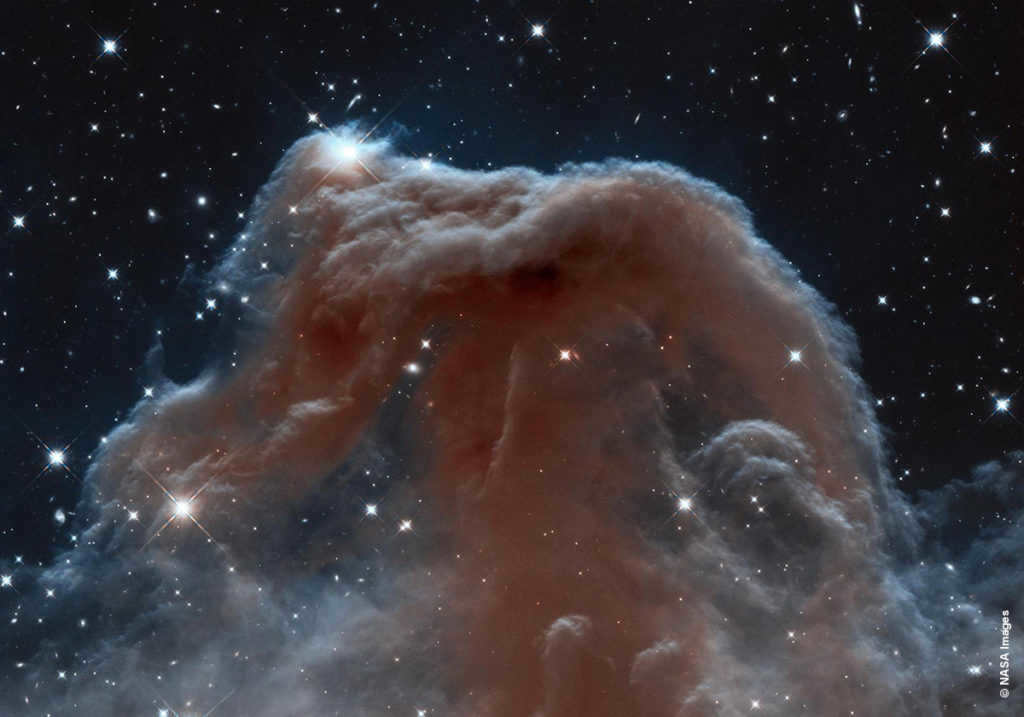
The Pleiades, also referred to as the seven siblings, are a group of stars located in the constellation Taurus. Legend has it that they were once nymphs who would dance beneath the nighttime sky. These nymphs caught the attention and desire of the hunter Orion, who began to chase after them. Despite the sisters’ numerous attempts to outwit him, Zeus intervened and placed them in the heavens. Orion continues to stalk his prey, forever immortalized as a constellation.
For male astronomers, the sky offers a plethora of inspiring role models.
Even in the present day, space missions and transportation continue to be named after mythical demigods and great men. The Orion spacecraft, for instance, is named after the legendary hunter of the Pleiades. “Kepler,” “Galileo,” “Copernicus,” “Cassini,” and “Ulysses” (Odysseus) are just a few examples of such vehicles. Even the more neutral names of Voyager and Pioneer have a “masculine” connotation, evoking images of men venturing out from their homeland to explore the unknown.
When it comes to women’s involvement in space missions, their names are perceived in two different ways. For instance, the spacecraft studying Jupiter’s atmosphere is named “Juno” in homage to the Roman goddess who was the wife of the god of thunder. According to legend, Juno had the ability to see through clouds, which allowed her to know which other goddess her husband was having affairs with.
The name of the lunar mission Artemis was inspired by the Greek goddess Artemis, who was known for her roles in hunting, fertility, chastity, and motherhood. It seems likely that the mission was named after Artemis because she is the sister of Apollo, who was the namesake of the first U.S. space program.
Finding appropriate designations for celestial bodies both within and beyond our solar system poses a considerable challenge. Despite the astronomers’ preference for impartiality, the selection is often influenced by human factors, as well as the historical, cultural, or political context of a particular nation. The majority of designations still exhibit a “Eurocentric” bias, reflecting the dominance of Western civilization. However, a gradual shift towards inclusivity is underway, as the International Astronomical Union strives to promote a more diverse and equitable approach. There are countless celestial objects that belong to all peoples and cultures of Earth, regardless of their impact on global history. Encouragingly, initial strides have already been taken on this path towards inclusivity.
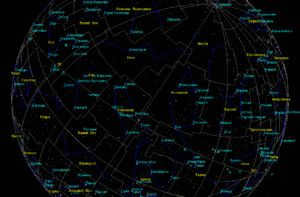
Traditionally, the largest and brightest celestial objects are given their own unique names. In ancient times, stars were typically named and many of these names originated from Arabic or Latin. However, when translated, these beautiful names may not always sound as impressive.
- Legends and myths surrounding star names
- Historical methods of naming stars
- Modern practices for designating stars
- Examples of aesthetically pleasing star names
Myths and Legends
Typically, the Greeks and Arabs were responsible for naming large celestial objects that are visible to the naked eye at night. These names were often inspired by various myths and legends. For instance, we have names like Cassiopeia (a queen from mythology), Orion (a hunter), and many others. It’s important to note that some of the names given to these space objects during that time may seem meaningless to modern individuals. For example, in the constellation of Lepus, there is an object called Nihal by the Arabs, which translates to “Camel quenching thirst”. To the average person, this may seem strange, but scientists understand that the Arabs named it so due to its correlation with the asterism “Camel Caravan”.
Here’s an interesting question: What are the effects of the Earth’s axial rotation?
How names were assigned in ancient times
During ancient times, constellations played a crucial role in navigation. Therefore, astronomers began giving distinct names to the brightest stars that were visible to the naked eye. Not only were the names given, but also one letter from the Greek alphabet was assigned to each star. The allocation of letters followed a specific pattern:
- The brightest star in the constellation was named Alpha,
- The second brightest and largest point in the same constellation was named beta,
- Similarly, the third brightest star in the constellation was designated as gamma.
These naming conventions greatly facilitated and enhanced celestial navigation.
Current Naming of Stars
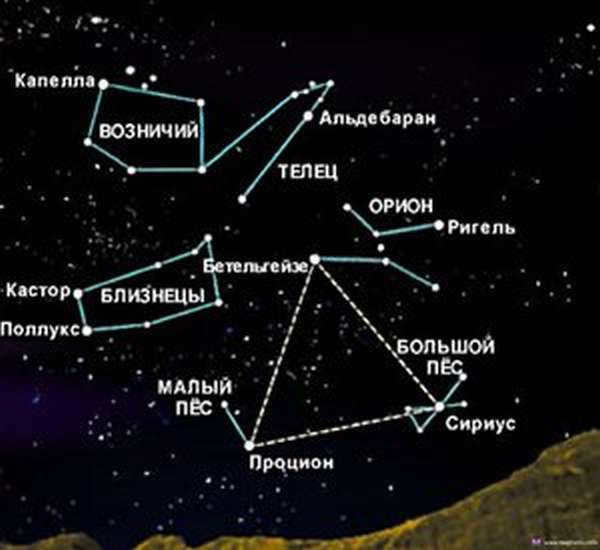
In the present day, stars are no longer referred to by the enchanting terms derived from mythology. Scientists worldwide now assign a numerical code to these newly discovered celestial objects. This phenomenon is easily comprehensible – thanks to advancements in optics and the development of cutting-edge telescopes, it has become possible to observe even tiny star clusters situated in distant galaxies. Bestowing a unique name upon each of these identified objects has become nearly impractical and futile, given that the catalogue is constantly expanding, and it is unlikely that this situation will change in the foreseeable future.
However, there is an exception to this rule. In the field of astronautics, stars are utilized for navigation as well. And to aid in remembering each point of interest more effectively. Astronauts, as well as NASA and Roscosmos, frequently assign them nicknames. It often happens that these invented names are remembered and become actively used. There is also another tradition in astronomy – newly discovered objects are often named after their discoverer or in honor of prominent scientists. This is how the stars Krzeminskii and Moiseyev came to be named. Of course, these names are not officially recognized by the academic community, but they are frequently used in popular scientific literature and everyday life.
Exquisite appellations
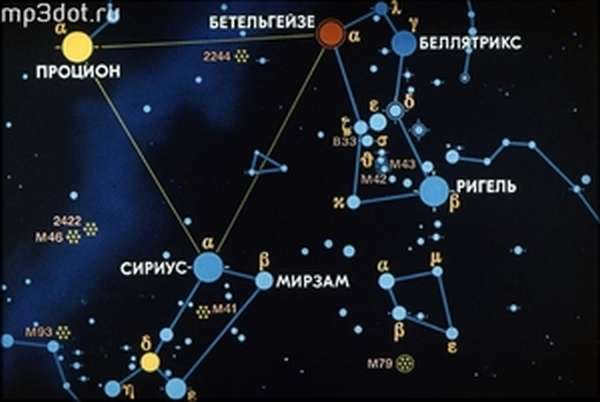
The names of celestial bodies that exist today frequently astound us with their stunning beauty and unique qualities. It is no surprise that many of these names are adopted by authors and filmmakers as fitting titles for their books or movies. In fact, a multitude of these borrowed names can be found in the now iconic Harry Potter series.
The compilation of the most stunning star names typically includes Antares, Vega, Capella, Castor, Pollux, Electra, Etamine, and Mimosa. However, considering the vast number of celestial entities with distinct appellations, it is evident that this list cannot be deemed exhaustive. Undoubtedly, the subjective perception of each individual plays a significant role in determining whether a particular name resonates with them. Consequently, debates concerning the attractiveness of star names, constellations, galaxies, and other astronomical phenomena are utterly futile.
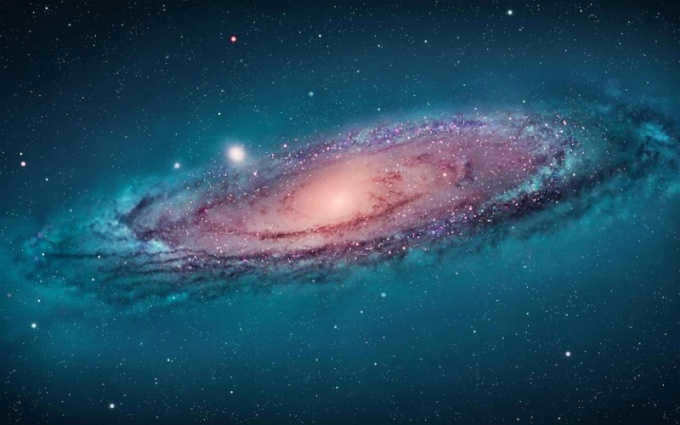
Aldebaran, Rigel, Arcturus, Capella, Procyon, Altair – these and numerous other beautiful names can be found in lists of traditional Greek, Arabic, and Chinese star names. Modern astronomy has developed more complex systems for designating the stars discovered by humans. It is estimated that there are over a hundred billion galaxies in the Universe, making it nearly impossible to count the total number of stars they contain. Even modern astronomers struggle to navigate the vast number of stars, which is why a convenient and universal system for designating celestial objects has yet to be created.
In the past, stars such as Sirius or Vega served as guiding stars for travelers to navigate in space.
For amateur astronomers, there is no need to delve into such complexities: simply familiarize yourself with the various types of stars and commit the most significant ones to memory.
Dwarfs and giants
Dwarfs make up the majority of stars in our galaxy, comprising 90 percent of all stars, including the Sun. However, it’s important to note that the term “dwarf” refers to their lower luminosity rather than their size. An excellent example of this is Proxima Centauri, a red dwarf star that happens to be one of the brightest in our solar system.
Giants, on the other hand, are the most luminous stars and have radii ranging from 10 to 100 times that of our Sun. An example of a giant star is Pollux, a blue giant located in the Gemini constellation. Both dwarfs and giants can display a variety of colors, including red, orange, yellow, white, blue, brown, and even black.
Stars that Change Brilliance – Variables
In the field of astronomy, variables refer to stars that exhibit changes in their brightness over the course of their observation. Over 28,000 such stars have been identified to date. Among the most well-known are Mira and Algol, and approximately forty can be seen with the naked eye.
Powerful Stellar Eruptions – Supernovae
Supernovae are a distinct category of stars that undergo explosive eruptions of immense power, surpassing the luminosity of an entire galaxy. It is important to note that these stars are not newly formed, but rather have existed for some time before erupting. The term “Supernova” was coined due to the visibility of these eruptions. One of the most renowned examples in this class is Kepler’s supernova, which was discovered in 1601.





